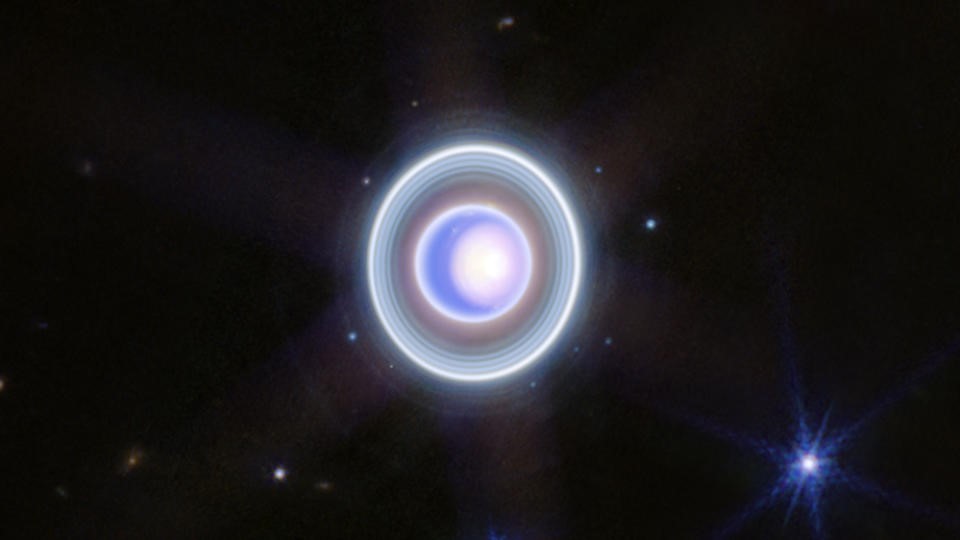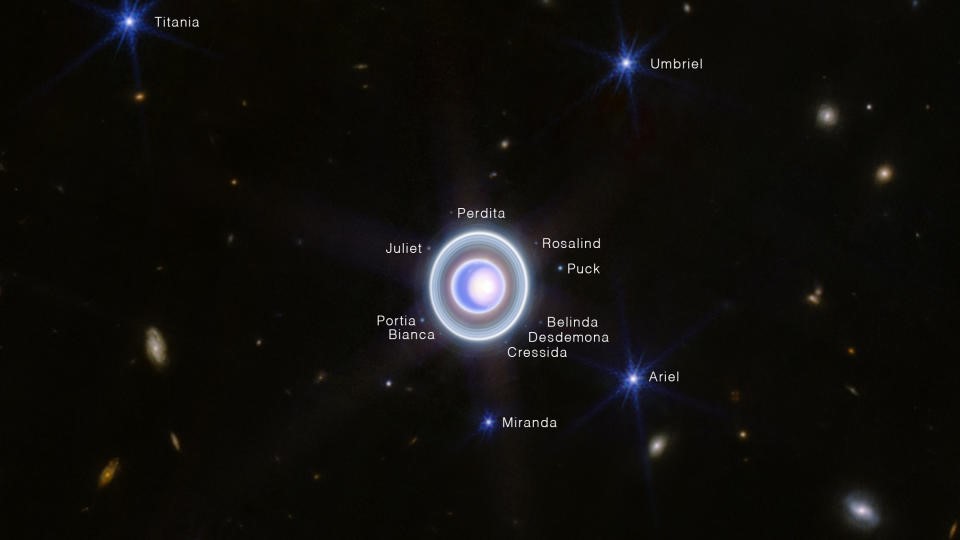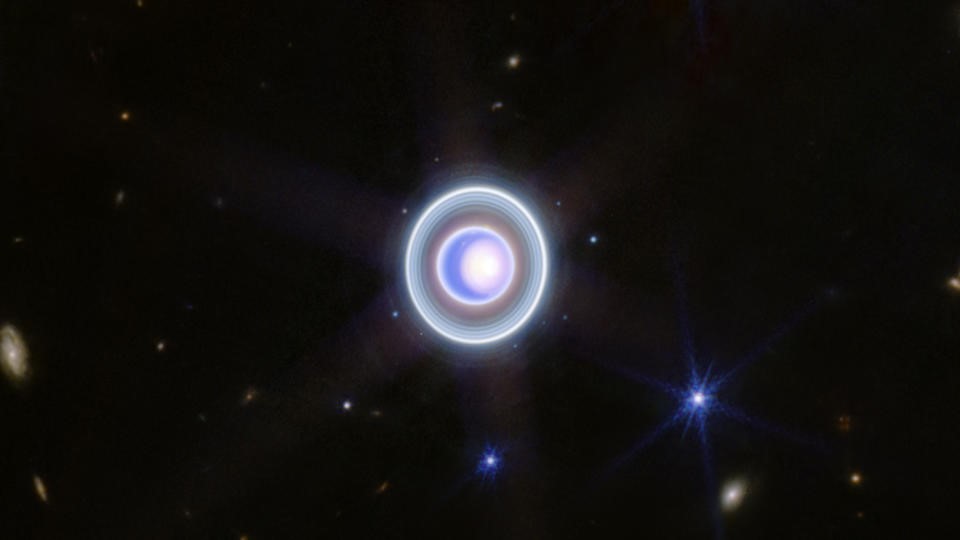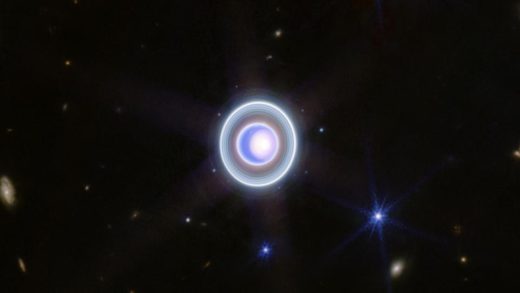Webb telescope’s new Uranus image looks like a portal to another dimension
Webb telescope’s new Uranus image looks like a portal to another dimension
The craft’s NIRCam filters captured the planet, including its rings, in unprecedented detail.

The James Webb Space Telescope (JWST) has a treat to celebrate the upcoming second anniversary of its launch. NASA and the European Space Agency (ESA), which operate the craft alongside the Canadian Space Agency (CSA), shared a recent image of the icy planet Uranus. The picture, resembling a glowing blue marble rippling into a black ocean, was funneled through the telescope’s infrared filters to capture wavelengths future space travelers wouldn’t see with the naked eye.
Compared with the generic-looking images of Uranus taken by Voyager 2 in the 1980s, the Webb telescope paints a more vivid picture. Capturing light in the infrared spectrum, the craft’s sensors reveal a “strange and dynamic ice world filled with exciting, atmospheric features,” as the team operating the telescope described it.
The JWST’s image showcases the planet’s rings surrounding the planet, including “the elusive Zeta ring,” Uranus’ faint and scattered innermost one. You can also catch its north polar cloud cap, the white blob near the center.

The image also captures 14 of Uranus’ 27 moons, labeled in the photo above. Among the (mostly Shakespearean-named) orbiting bodies pictured are Oberon, Titania, Umbriel, Juliet, Perdita, Rosalind, Puck, Belinda, Desdemona, Cressida, Ariel, Miranda, Bianca and Portia.
The JWST’s photo uses four NIRCam filters, revealing detail in the near-infrared spectrum. These include F140M (blue), F210M (cyan), F300M (yellow) and F460M (orange). An image NASA shared earlier this year showed Uranus in only two filters (blue and orange), resulting in a more primitive-looking view of the icy giant.
Speaking of ice, Uranus has loads of it. The planet rotates on its side at about 98 degrees, plunging the opposite side of the planet into extreme cold and darkness for a quarter of a Uranian year. Oh, and since Uranian years last around 84 Earth years, that means, by our calendar, the planet’s dark side enjoys a blustery 21-year winter.

Astronomers believe the Webb telescope’s images will help them better understand Uranus, especially its Zeta ring, for future missions. They also view the pictures as a proxy for learning about the nearly 2,000 documented exoplanets in other solar systems that share traits with our ringed and icy neighbor.
(3)


